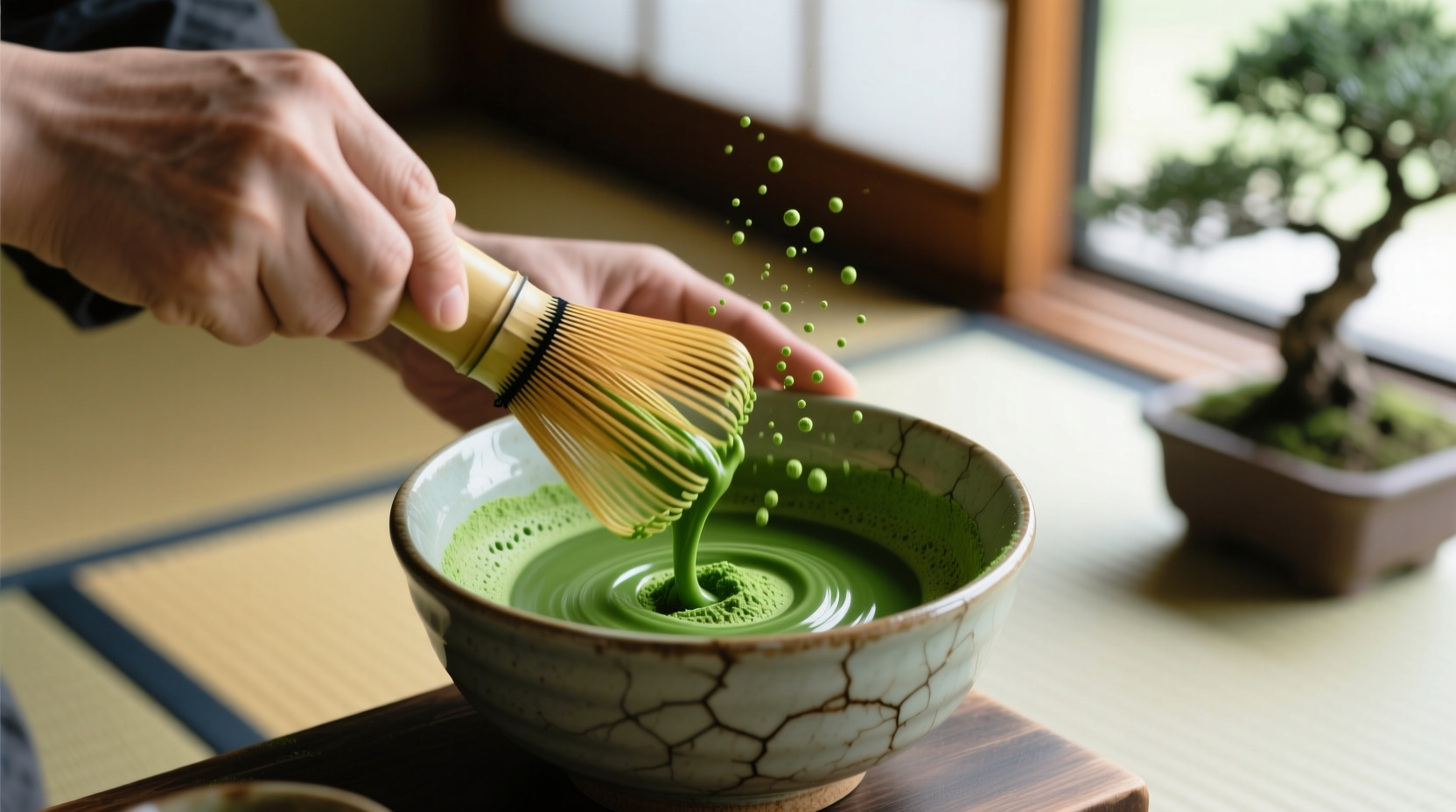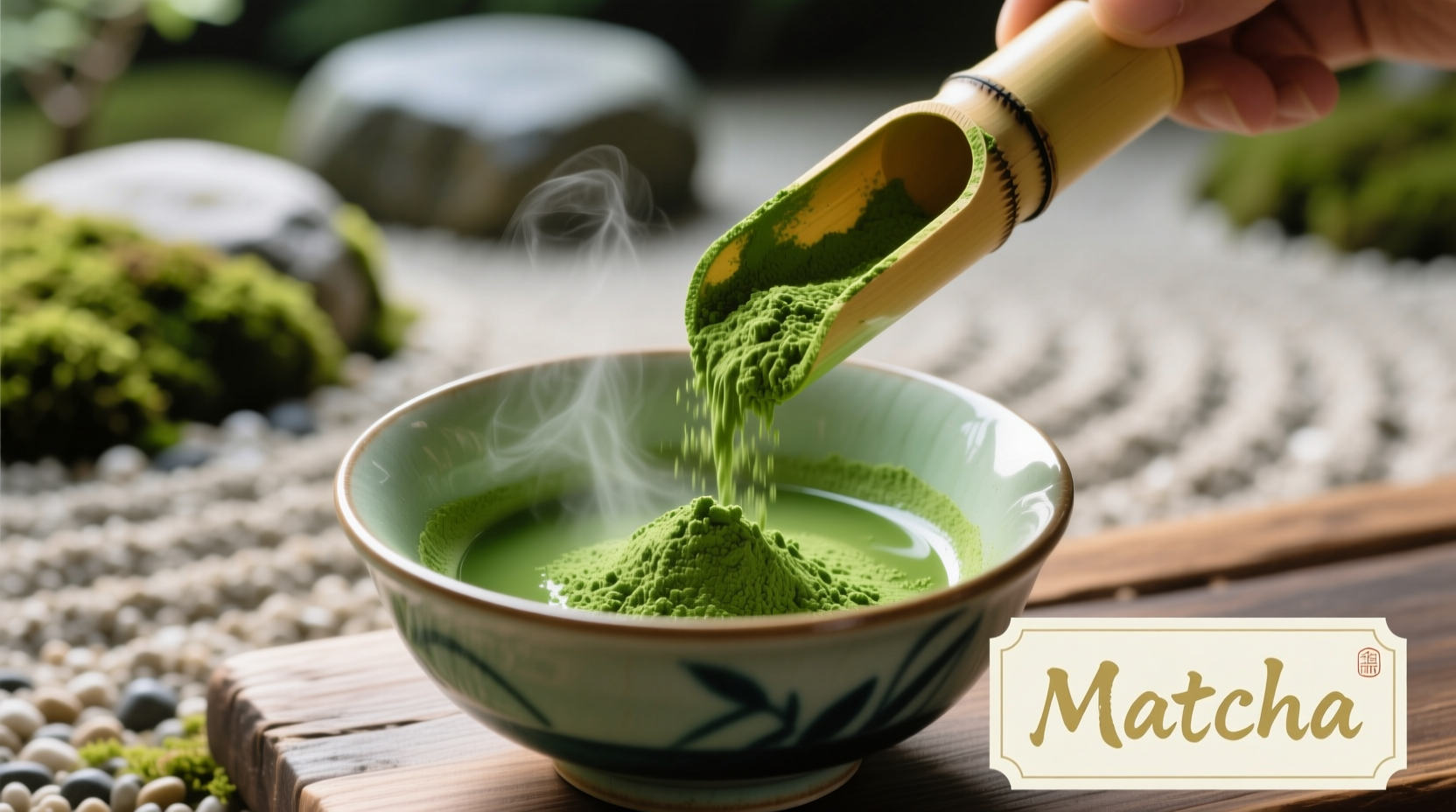Ever wonder what does matcha taste like when you take your first sip? That vibrant green powder delivers a complex flavor journey that surprises many first-time drinkers. As a tea connoisseur with decades of sensory training, I've guided thousands through matcha's unique profile. Let's unpack exactly what to expect and why understanding these nuances transforms your experience.
The Core Flavor Profile: Beyond 'Green Tea'
When you whisk ceremonial grade matcha, you're consuming the entire tea leaf - not just an infusion. This creates a fundamentally different experience than steeped green tea. The dominant note is umami (savory richness), followed by:
- Natural sweetness from amino acids like L-theanine
- Fresh grass or young spinach notes
- Creamy mouthfeel with zero astringency in quality matcha
- Clean finish without lingering bitterness
This profile stems from matcha's unique cultivation. As documented by Japan's Ministry of Agriculture, Forestry and Fisheries, tea plants are shaded 20-30 days before harvest (MAFF.gov). This boosts chlorophyll and L-theanine production while reducing bitter catechins - explaining why properly prepared matcha tastes sweet rather than astringent.
| Characteristic | Matcha | Steeped Green Tea |
|---|---|---|
| Taste Dominance | Umami-rich with natural sweetness | Bitter/astringent notes |
| Mouthfeel | Creamy, full-bodied | Light, watery |
| Preparation Impact | Water temp critical (70-80°C) | Less temperature-sensitive |
| Aftertaste | Clean, refreshing finish | Potential lingering bitterness |
Why Your Matcha Might Taste Bitter (And How to Fix It)
That unpleasant bitterness many report isn't inherent to matcha - it's a preparation or quality issue. According to the Specialty Tea Institute's sensory guidelines (specialtytea.com), two critical factors determine flavor:
- Water temperature: Exceeding 80°C (176°F) scalds the powder, releasing excessive tannins. Always use water cooled 2-3 minutes after boiling.
- Whisking technique: Inadequate aeration creates clumps that concentrate bitterness. Vigorous 'M' shaped whisking for 15-20 seconds ensures even dispersion.
Quality grade matters too. Ceremonial grade (made from first-harvest嫩芽) delivers nuanced sweetness, while culinary grade often contains later-harvest leaves with higher bitterness. Always check for vibrant emerald color - dull or brownish hues indicate oxidation and degraded flavor.

Training Your Palate: A Step-by-Step Tasting Guide
Follow this professional tasting sequence to fully appreciate matcha's complexity:
- Observe: Note the luminous jade color - pale indicates weak preparation, dark suggests over-concentration
- Smell: Inhale deeply for fresh-cut grass and steamed spinach aromas (avoid musty or fishy notes)
- Sip slowly: Let it coat your tongue - initial umami should transition to natural sweetness
- Assess finish: Quality matcha leaves a clean, refreshing sensation for 30+ seconds
This method reveals why Japanese tea masters describe matcha as having 'eight flavors' - from the initial savory hit to the lingering sweetness. When prepared correctly, you'll experience what makes matcha beloved globally: a harmonious balance where no single note dominates.
Common Misconceptions Debunked
Let's clarify frequent misunderstandings about what matcha tastes like:
- 'Matcha is always bitter' - False. Bitterness indicates poor quality or incorrect preparation. Authentic ceremonial grade should showcase umami and sweetness.
- 'It tastes like spinach' - Partially true. The vegetal note resembles fresh spinach, but high-grade matcha adds complex marine and nutty undertones.
- 'All matcha is the same' - Significant variations exist. Uji-grown matcha offers delicate sweetness, while Kagoshima versions deliver bolder umami.
Final Sip: Embracing Matcha's True Flavor
Understanding what does matcha taste like transforms it from a trendy drink to a profound sensory experience. When you master preparation and select quality powder, you unlock that signature umami sweetness with grassy freshness - a flavor profile impossible in steeped teas. Remember: great matcha should invite you to take another sip, not reach for sugar to mask bitterness. Start with ceremonial grade, perfect your water temperature, and let your palate discover why this ancient preparation has captivated tea lovers for centuries.
Frequently Asked Questions
Why does my matcha taste bitter even when I follow instructions?
Bitterness typically indicates water temperature above 80°C (176°F) or using culinary-grade powder meant for cooking. Always cool water 2-3 minutes after boiling and choose ceremonial grade for drinking. Check for vibrant green color - dull hues signal oxidation.
Does matcha taste like regular green tea?
No. Matcha has a richer umami flavor with natural sweetness and creamy texture since you consume the whole leaf. Steeped green tea tends to be more astringent with lighter body. The shading process before harvest creates matcha's unique amino acid profile.
How can I make matcha taste sweeter without adding sugar?
Use water at 70-75°C (158-167°F) and ceremonial-grade powder. Higher L-theanine content in quality matcha enhances natural sweetness. Whisk vigorously to aerate - the froth improves mouthfeel. Try adding a pinch of salt to balance flavors.
What causes the grassy flavor in matcha?
The fresh grass note comes from chlorophyll developed during the shading process. Higher-quality matcha has balanced grassiness without hay-like bitterness. This vegetal note should be reminiscent of young spinach, not overgrown lawn.
Does ceremonial grade matcha taste different from culinary grade?
Significantly. Ceremonial grade (first-harvest leaves) offers delicate umami and natural sweetness with minimal astringency. Culinary grade (later harvests) has stronger bitterness and grassiness, designed to withstand cooking. Never use culinary grade for traditional preparation.











 浙公网安备
33010002000092号
浙公网安备
33010002000092号 浙B2-20120091-4
浙B2-20120091-4